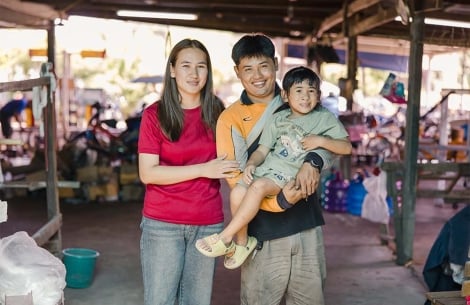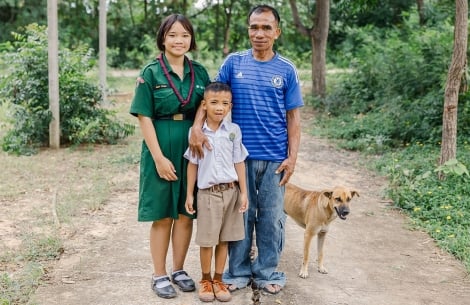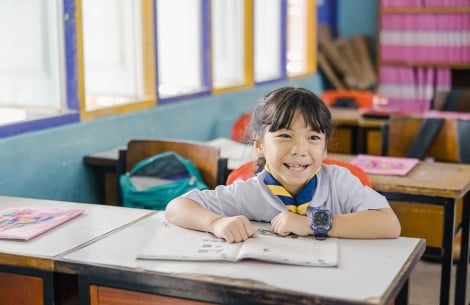Nurses Yupin and Suteera: The Beating Heart of Cleft Care in Thailand
This International Nurses Day, we salute two of our heroes
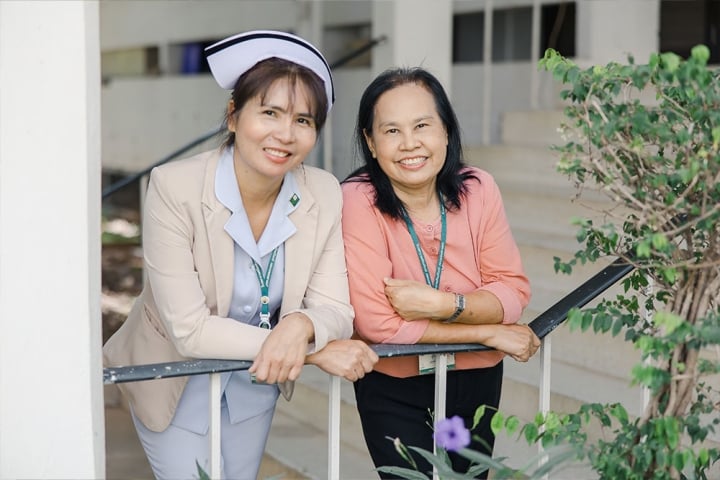
From birth to breastfeeding, from surgery to speech therapy, Smile Train partner Tawanchai Center is one of the premier cleft care providers in Southeast Asia. At its beating heart stand Nurse Yupin Paggasung and Nurse Suteera Pradubwong.
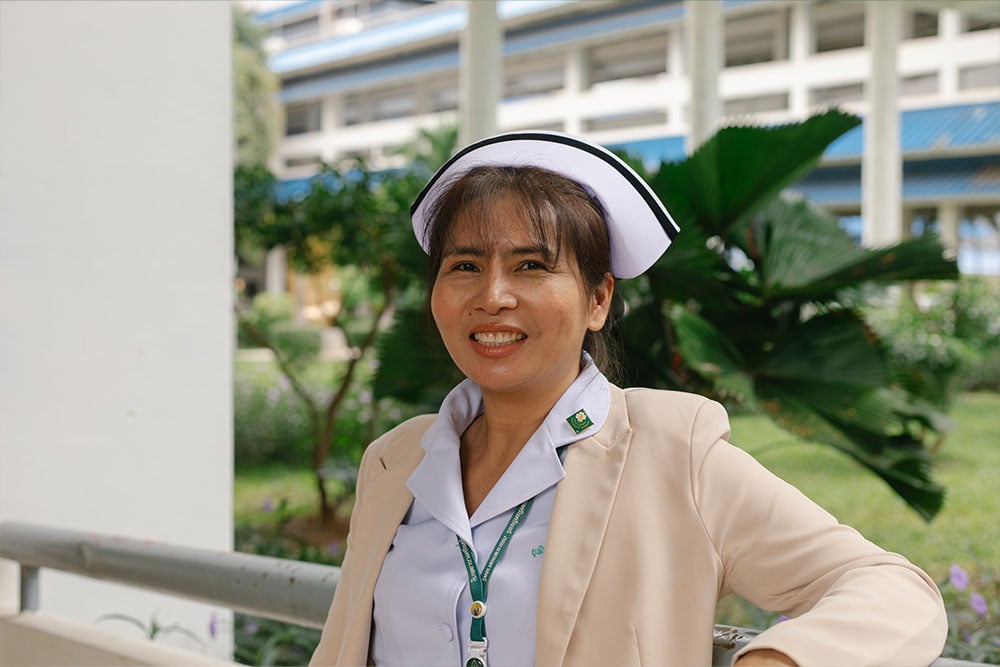
Yupin, a nurse coordinator and case manager, has been working at Tawanchai full-time since 1997. She has been a mentor to Suteera, now a nurse specialist, counselor, and senior researcher, since she started at the clinic in 1999.
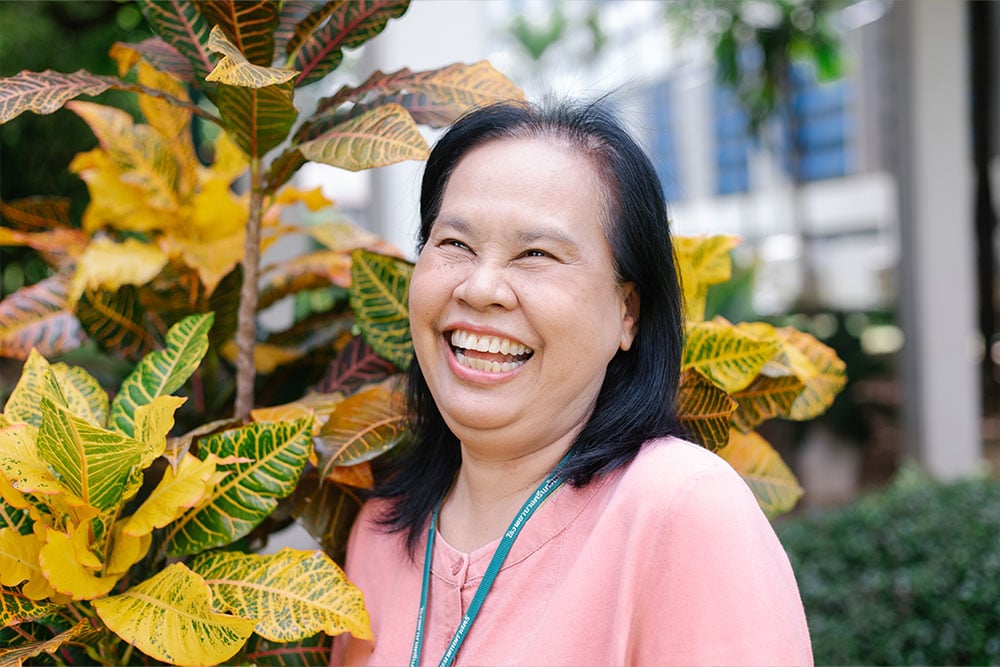
As a duo, they have built a comprehensive, world-class team of 10 specialists at Tawanchai. In the process, they have revolutionized cleft treatment in Thailand by developing an interdisciplinary protocol for treating not only patients from birth through adulthood, but their families too. In fact, they have each published multiple studies of their work in medical journals.
In honor of International Nurses Day, we caught up with these two cleft care pioneers. We have no doubt they will amaze you, too.
What are some ways you help cleft patients?
Suteera: For most of the families we see, this is their first time seeing a baby with a cleft. They’re quite nervous. So we prepare them. We take 30 minutes to comfort the mother and make her feel better while a ward nurse takes care of her baby. And while we are in there with them, we explain the protocols ahead, all the care their baby will receive over the long cleft journey.
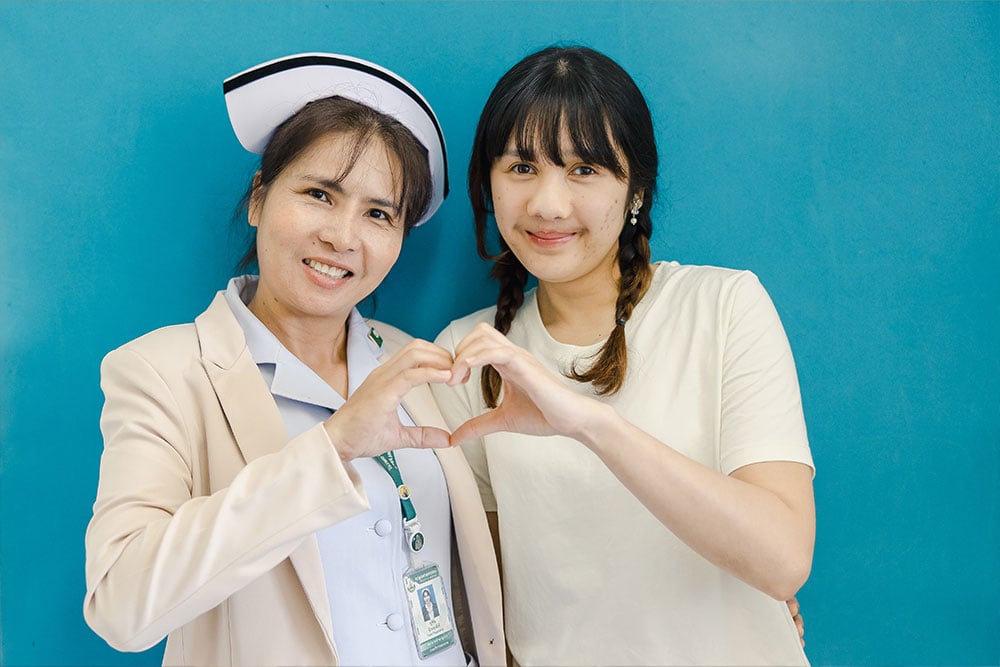
Yupin: A lot of families think that their baby can immediately go to surgery, but that is not the case. So, as nurses, we have to explain that the right time for the surgery is when the baby is about three months old, with proper weight and height — which we will help them reach.
How has the program evolved since you arrived in the late ‘90s?
Suteera: When I first started, we offered generic nursing care for all patients. After several years of working with children with clefts, we saw that that wasn’t sufficient. They needed special care. So in 2007, Yupin and I teamed up to create a multi-disciplinary protocol on how to take care of cleft-affected babies and parents alike.
We started by establishing a firm cleft lip and palate treatment timeline: Lip surgery should happen from three to six months, and here’s what to do if the patient is sick or there is some other reason they can’t receive it on time. Palate surgery should happen at 10 to 18 months, and if it can’t happen then, here’s what to do, etc.
We were also careful to factor in the emotional support families need throughout the process and the feelings they might be having because it was clear to us that this wasn’t being considered before, and it needed to be.
Suteera, can you please tell us about your research?
Of course. I have been the lead author of 25 research studies, with the first published in 2007.
They have been published in the Journal of the Medical Association of Thailand, Srinagarind Medical Journal, Sage Open Medicine, and Archives of Plastic Surgery.
What topics have you explored through your research?
I explore issues I encounter in practice, such as caregivers’ lack of understanding about clefts, challenges patients face at home and within their communities, and assessing the outcomes of previously treated patients — whether their quality of life has improved and how satisfied they are with their self-image.
I've also worked to identify what constitutes an effective nursing system for babies with clefts and to develop nursing care that better meets the needs of patients and their families and fosters collaboration among the caregiving team.
How long does it take to complete a paper?
Each study takes more than one year to complete.
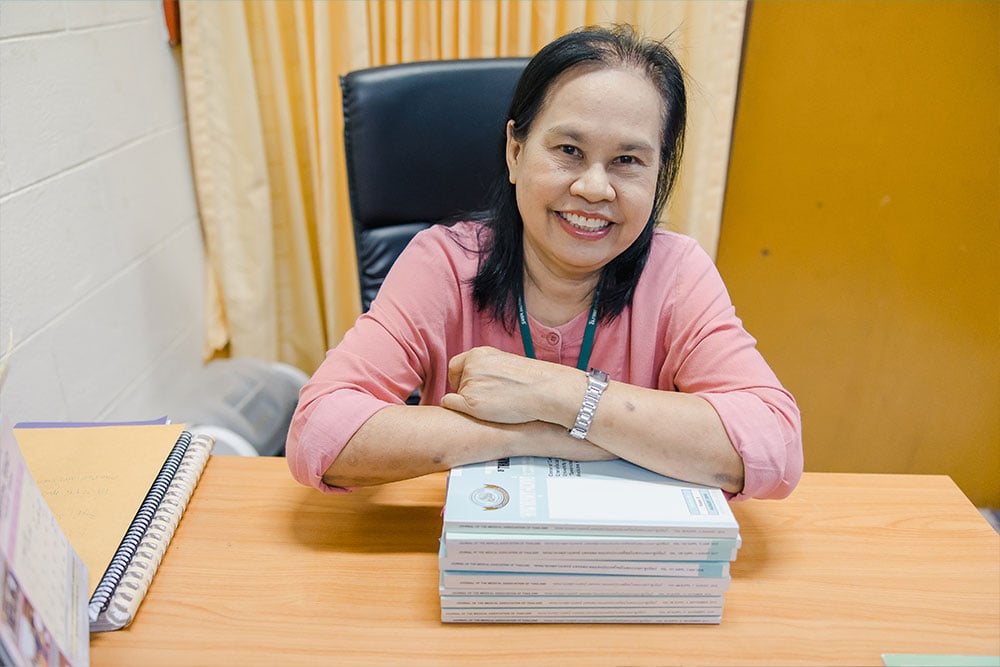
What research are you most proud of?
My proudest achievement is my paper "Development of Improved Cleft Lip/Palate Face Models for Teaching Parents of Children with Cleft Lip/Palate" (2010) because it has been widely shared with patient families to help them understand their child’s condition. It has also been presented to the general public through exhibitions on cleft care at various conferences. In fact, the model we suggested was officially recognized as a medical innovation and patented.
Plastic surgeons have also used it to sketch patients' facial features on the simulation model before actual surgery, effectively transferring knowledge to trainee surgeons in both domestic and international healthcare settings.
Another publication I am proud of is "Evaluation of Nasolabial Esthetics in 8- to 12-Year-Old Patients with Cleft Lip and Palate by Healthcare Professionals in Northeast Thailand" (2024). This research has significantly contributed to more patients receiving surgery through a multi-disciplinary team.
In more general terms, how has your research benefited your patients? Your team?
Care, treatment, surgery, and rehabilitation processes have all been improved because of my research. It has helped patients and caregivers gain a better understanding of clefts and receive continuous follow-up care and has given me opportunities to share their perspectives with a wide audience.
My findings on multi-disciplinary care have also been utilized to enhance the work of each specialty on the cleft team. In fact, the evidence-based outcomes my team discovered through the studies will be used for future evidence-based practices.
Are you currently working on another paper? Can you say what it's about if so?
I am continuously assessing quality of life and self-image in patients, as this will provide valuable insights for long-term care (I am specifically looking at periods four to six, eight to 12, and 16 to 20 years post-surgery). I am also writing about the nurse coordinator’s role in multi-disciplinary management, which will be incredibly beneficial for the healthcare community.
Yupin, can you tell us about your research?
Sure. I have published four research projects, all in the Srinagarind Medical Journal:
- "Improvement in Quality-of-Life in Patients with Cleft Lip and Palate by Home Visit Program" (2021)
- "Problems with Access to Services for Orofacial Cleft Patients" (2022)
- "Outcomes of Quality-of-Life-Promoting Activities on Adolescents with Cleft Lip and Palate in Khon Kaen Province" (2023)
- "Quality-of-Life Satisfaction of Parents of Cleft Lip and Palate Patients Aged 8-12 Years" (2024)
I have received positive feedback on all of them.
Each has given my team new data about the problems our patients and families face in accessing services, which we use to solve their problems. For example, when we learned that some patients did not have the money to travel to their follow-up treatments, our team was able to help them with travel expenses, thanks to Smile Train, making it easier for them to access continuous treatment.
That, of course, is what I'm most proud of and why I keep doing this additional research. Everything we do is to improve quality of life for children with clefts and their families.
What is your best advice for nursing students?
Yupin: Success in this role is all about your personality. You have to be understanding and easygoing. You have to be able to approach different parents differently and make sure that you give them your understanding first. So my advice to nurses is always to be kind and do your homework about clefts so that you can explain anything in detail when parents ask.
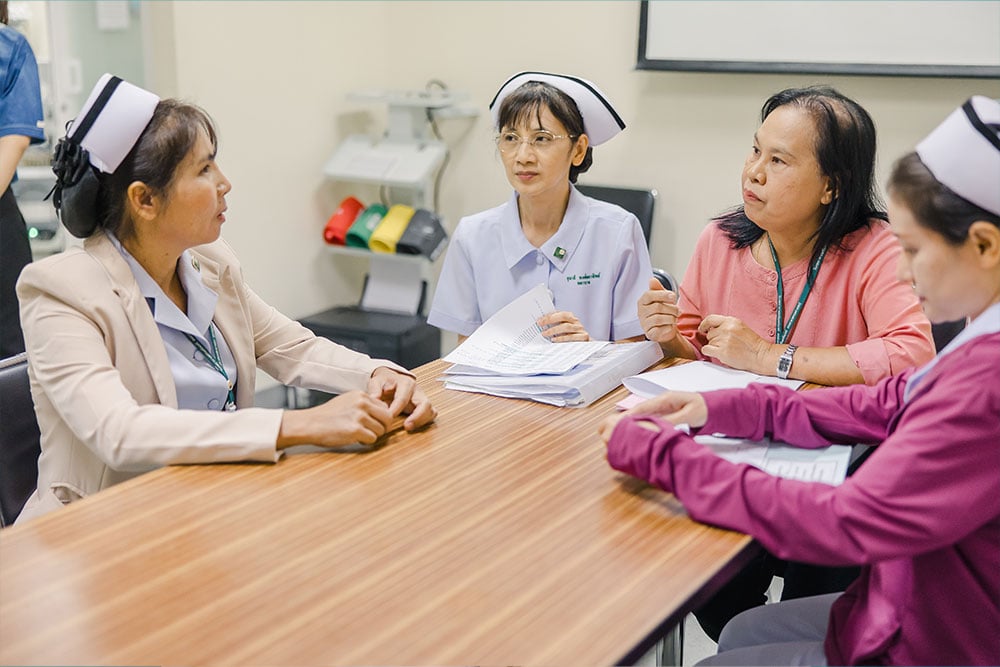
How is Smile Train helping you?
Suteera: If we didn't have Smile Train, we wouldn’t have Tawanchai Center now. We are very blessed. Smile Train is the only organization that gives support to us. Thanks to you and your donors, we were able to bring in experts and train a world-class team here. Thanks to you, we have money for special feeding equipment, which is very expensive, and to do home visits or help with travel costs for patients who couldn’t receive care otherwise, like Yupin mentioned. All of this improves quality of life for children with clefts all throughout the north and northeast provinces.
As nurses, you make us and our whole staff feel good because you are making it possible for us to do very sustainable and rewarding work that we really love.
We will never forget Smile Train’s support.

Can you share a story about a patient that you’ll never forget?
Suteera: Yes. There is a story that is imprinted in my heart forever.
One day, a grandpa brought his five-year-old grandson to Tawanchai Center. I asked the man why he brought the boy in to see us so late, and he said, “We just wanted to wait to see if the baby was going to die or not.”
I was so sad. After that, I became determined to make sure that every family with a child with a cleft understands that this is not deadly, that it is treatable.
This story has been the inspiration behind what I do from that moment until now.
You can power the work of healthcare heroes like Nurses Suteera and Yupin today.

